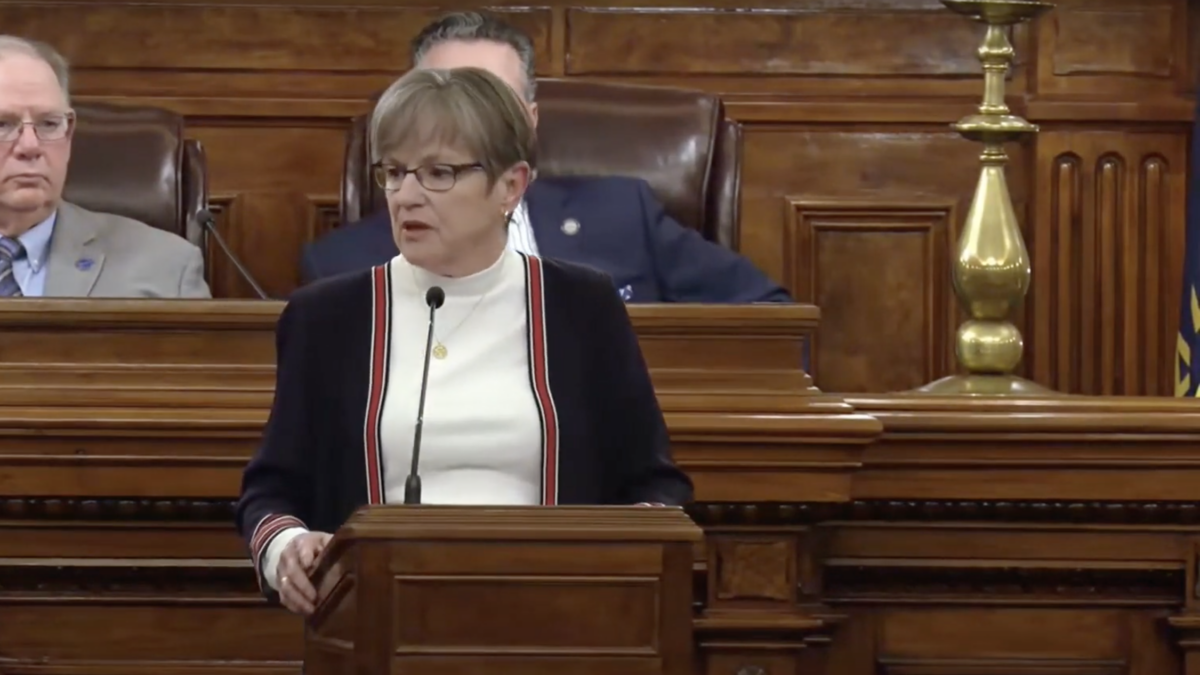
I’ve been getting emails about Christmas since October because America’s foolhardy pandemic response murdered the supply chain. I did indeed start holiday prep earlier this year, but not because of all those emails or the messaging about how Soviet-echoing shortages are ackshully good. It’s because the earlier I prepare, the more space I have to focus on worship and family.
Making way for a festive holiday season is a big job for moms, and it’s taken me years to work out how I want to celebrate with my family and what it all means. In fact, I’m still not done with that. One of my mom maxims is it’s okay if you’re not perfect so long as you’re making progress. This attitude helps me from sinking into despair when I fail and from getting too impressed with myself (while still celebrating!) when I improve.
I thought others might like to see some of the development in our family holidays this year, so here’s a little list of some habits and preparations for the winter Christian holidays (as opposed to the spring Christian holidays of Lent and Easter) that I’m building into my slowly-improving annual routines as a wife and mother.
1. More Time at Church
Despite their secularization, holidays are an intrinsically religious observance. It’s right there in the origin of the word: holy days.
Like it or not, thanksgiving is an act of worship. Advent, Christmas, and Epiphany are also entirely religious observances, again despite the secularization that has nabbed saints like Nicholas. Given this, there is nothing more appropriate to do for such holidays than go to church. Indeed, there’s really no point in celebrating these holidays if you don’t believe in their reason for existing in the first place.
Like many others, our church adds social activities throughout Thanksgiving, Advent, Christmas, and Epiphany, such as suppers before the midweek evening services, church decorating, observances of saints’ festival days, and parties.
I encourage you to make way for whatever level of participation in such activities you can. After all, the point of Christmas is the God who came to earth to give Himself to us as His gift, and the Divine Service is where we find that one true God in Word, Body, and Spirit. That’s where He’s promised to be bodily present for you, during all holy days as well as in regular time. It’s a true miracle that connects to the other miracles we remember, most especially at this season the world-changing miracles of Christ’s incarnation and soon His Second Coming.
Now, on to lesser concerns!
2. Prepping the Food Far Ahead of Time
I love to make amazing food for special days. It’s also fun to fit our menus to the seasons. Yet the time required to make such food, combined with my responsibilities to work and family, can come at the expense of enjoying those I love during the holidays.
So this year, I started prepping holiday food in September. I stuck pie crusts and pumpkin filling in the freezer, along with a pan of mashed potatoes, and another of parboiled and rosemary salted red potatoes ready to roast in the oven. I canned homemade cranberry sauce and apple pie filling. Ginger biscotti and Christmas cookie dough were frozen, as was cubed homemade bread for turkey stuffing.
My main strategy for doing all this while also working full-time and having six kids is two-fold: First, I double recipes as I cook months before Thanksgiving and Christmas, so one freezer meal tucked away also produces one dinner or side for the day it’s made. Second, I break the steps of making each item into very bite-sized pieces that I can string out over several days, if necessary.
So, to take stuffing bread cubes as an example: on one September day, I mix up the dough and stash it in the fridge. The next day I bring it out and make two loaves. That night after eating one loaf with soup for dinner, I cube the second loaf, parceling out half of it for egg bakes I prep the weekend ahead for school-morning breakfasts and one half for the freezer stuffing cubes.
Same with the canning: One day I wash the cranberries and stick them in the fridge. The next day I make the simple syrup they’re going to be boiled in. The third day I boil them together, then stick that in the fridge. The fourth day, while I’m making dinner I heat up the sauce and the canner and then plunk it all together, and voila. Homemade cranberry sauce sweetened with dates instead of sugar that I can just pop open and serve in the jar at a feast. Same goes for pie fillings.
Maybe that sounds insane to you, and maybe it is, but this is how I get things done in just 10-15 minutes per day per step. That made Thanksgiving a breeze. I’m definitely doing this again next year.
Advance meal prep helps quiet my anxious Martha heart so I can enjoy the more important things a little more, like Mary. So does this next habit I’m working on.
3. Fewer Presents
It’s exhausting—and expensive!—to source what feels like a billion presents even if you don’t have six kids like my husband and I do. My husband and his five siblings simplify this by doing a Secret Santa, in which all his siblings and any of their spouses trade names and swap gifts accordingly.
For my children, I used to get all six one present each for most of the 12 days of Christmas. Yes, really. It was pretty easy, actually, when scooping up toys all year ‘round at those great kids resales and when I happened to find the perfect thing or a great deal during other shopping trips, then piled on all the “great deals” from Black Friday online.
This requires, of course, a decent amount of disposable income and a willingness to spend it this way, which many families may not have. Still others may have other financial priorities, as we are adopting also. For example, I’ve redirected some of this excess spending into buying higher-quality, locally farmed food.
Mollie wrote what seems like long ago at The Federalist about how the 12 days of Christmas greatly aid her gifts strategy of getting a thing or two for Christmas day and then hitting up the Dec. 26 toy sales for all the rest. More power to her and to a great variety of Christmas gift strategies. The heart is the most important thing, not how much you spend or buy.
And my family’s hearts struggle when we give and get too many things for Christmas. For one, it can tend to focus us all on material goods and on what we are going to get rather than what we are going to give. It can make us consumers instead of givers, when the ideal is exactly the opposite.
All of that to say is, as I wrote last year, I am continually trying to reduce how much cheap, slave-made junk I give as well as the cheap and exploitative “gimme gimme now” mentality that can accompany it. So if you are also feeling like reorienting your giving a bit, try fewer — and different kinds of gifts.
4. Different Kinds of Presents
I’ve also tried to think of a greater variety of presents to give. One of the categories I have moved into is also “experience” giving—memberships to a local zoo or pool, that sort of thing.
Another way to give to transcend the stuff frenzy is to make something, if you are able. My husband is a woodworking hobbyist. He’s just refinished an antique oak door with a stained glass window for our house. Gifts like that are obviously full of hours of love and they give me hours of joy to look at and use them. Even simpler gifts, like salt-dough ornaments from the kids, can do that, too.
When we married, a college friend gave us handmade pottery, and every time I use it I think of and pray for her. That is also why I like to give pottery and other art.
So much of the public art we are subjected to now is just plain ugly. Yet there are still many splendid artists whose work can bring a little bit of heaven to people’s homes. I like to support them and to benefit from their skills, as well as spread that kind of joy. I stock up or take cards from artists I find at local shows or farmer’s markets, then I reach out when I have a present to buy for a special occasion.
Here are some places I love to buy sacred art to give.
5. More Seasonal Alignment
Advent occurs as the natural world also calls for and brings about quiet, with its added darkness and coverings of leaves and snow. Penitence, patience, and reflection in Advent bring one’s body in harmony with both the natural and spiritual world.
One of the many reasons I feel great happiness in trying to align my everyday life with the historic church year is that it fosters sacred time with those I love most. The most direct manifestation of this is participating in the church’s memorials, festivals, and seasons, from All Saint’s Day to Reformation Day. If your church doesn’t have these, I feel sorry for how culturally and religiously poor you are and invite you to consider that these riches are also freely and joyously available to you.
Historically, Advent has been observed as a season of preparation and penitence, a “little Lent.” It offers moments to pause, reflect, and pray. When the frenzy of holiday meal preparation is safely locked in the freezer by November, and the presents are fewer and already wrapped and mailed a month early, I as a mom feel freer to participate in and therefore set an example to my children of fitting myself into these seasons with more prayer, penitence, and reception of God’s gifts, which include them.
Truthfully, I’m not very used to quiet. I’m also not very good at knowing what to do with it when it does occur. So I’m hoping to practice a little more this year, and a little more next year, on until Paradise.
6. More and Cozier Family Time
We all have mental pictures of what constitutes togetherness, warmth, coziness, and love. All these concepts blend into one’s idea of home, the feelings especially women tend to strive to bestow on those they love. For me, these pictures include fireplaces, books, candles, soups, breads, my children reciting the poetry they’ve memorized at school, storytelling, sweaters, slippers, snuggles, and crocheting.
It’s easy to conjure up mental images of how coziness might look in my home and life, but not so easy for me to bring them into my reality. I’m too busy scrambling to finish the dinner dishes, helping that one absentminded child find his boots again, or going to bed because I can hardly see straight. So I again employ my “a little bit is better than nothing” strategy, as well as trying for as much as I can fit in.
If I can’t have a whole meal in front of the fire, maybe we can have some crackers. If I can’t muster a hymn sing around the piano, maybe I can try a few verses of something easy and see if any kids show up, or just enjoy myself for five minutes. If I can’t do a big complicated birthday party, we can have a few kids over to play.
To reduce my anxiety and failure rates, I just think of the lowest passable bar and see if I can reach it. Usually I can. Then at least I did something. Something is better than nothing. Ten minutes of cozy is better than zero.
Also in this spirit, each year I like to try to add a bit more to our seasonal routines and my holiday “muscle memory.” I grew up in a home with no lasting holiday traditions, so making them part of life requires more from me. That means I can’t just do it all in one year. We have to add and prune as we grow—just like our ancestors did.
This year we just made some Advent candles out of beeswax, because a little kit I got for Candlemas last year went pretty well and the kids liked it. I’m going to see if we can’t get a bit of singing and poetry in around the fire or piano or both after dinners in the evenings.
I’m getting better at figuring out how to put on hot apple cider and hot chocolate bars when the moment seems right. I let a kid light a candle here or there, about which they get all squeaky. Added all together, these make a home cozy and bright and hopefully the people in it feel loved—one little thing at a time.
7. More Intentional Decorating
Part of the way I have developed to observe Advent as a preparation for Christmas includes decorating very slowly. Not only does this also make decorating more manageable, it helps harmonize our lives with our Christian heritage.
I plan decorating over Advent in four phases to match the four weeks of Advent. First, we pull out our Advent wreath and Jesse Tree. Second, we put up greenery (I’ve accumulated fake garlands and wreaths from Black Friday and post-Christmas sales over the years). Third, we go with white lights, doing the outdoor lights first because that’s what the mostly non-observant neighbors see and I want them to feel cheered up by my house even if I’m not Christmassing until actual Christmas.
Lastly, at the very end, and either during the third Gaudete week of Advent or on Christmas Eve itself, we finally decorate the tree and bring out the color.
One of my most favorite holiday decoration discoveries is christmons, a longtime and worldwide Christian sacred art form. Christmons bring to our home (and church) sacred art and symbolic meaning. Their presence in my home during Advent, Christmas, and Epiphany, as well as Lent and Easter, really helps turn my thoughts towards eternal things throughout each day.
I like to put out a few new christmons each week of Advent and Lent on our way to Christmas and Easter. The children ask what the pictures mean and that presents opportunities to talk about art and our faith in very rich family conversations.
This new book I’m looking forward to explains the meanings of various christmon symbols throughout the church year and its associated readings many orthodox churches follow in their lectionaries (Bible readings organized to match specific Sundays and other church festivals). Consider whether using these as part of your home and church decorating may also be a way to bring history and sacred symbols into your life.
Stay tuned to The Federalist Radio Hour in the next week for a special episode with me and Like Mother Like Daughter’s Leila Lawler, author of the brand-new “Summa Domestica” (hint: buy this for your wife or daughter for Christmas, you won’t be sorry). We’ll talk about our family Advent, Christmas, and Epiphany traditions and how we’ve grown into them as mothers.
Happy Advent to all, and to all a good life!








